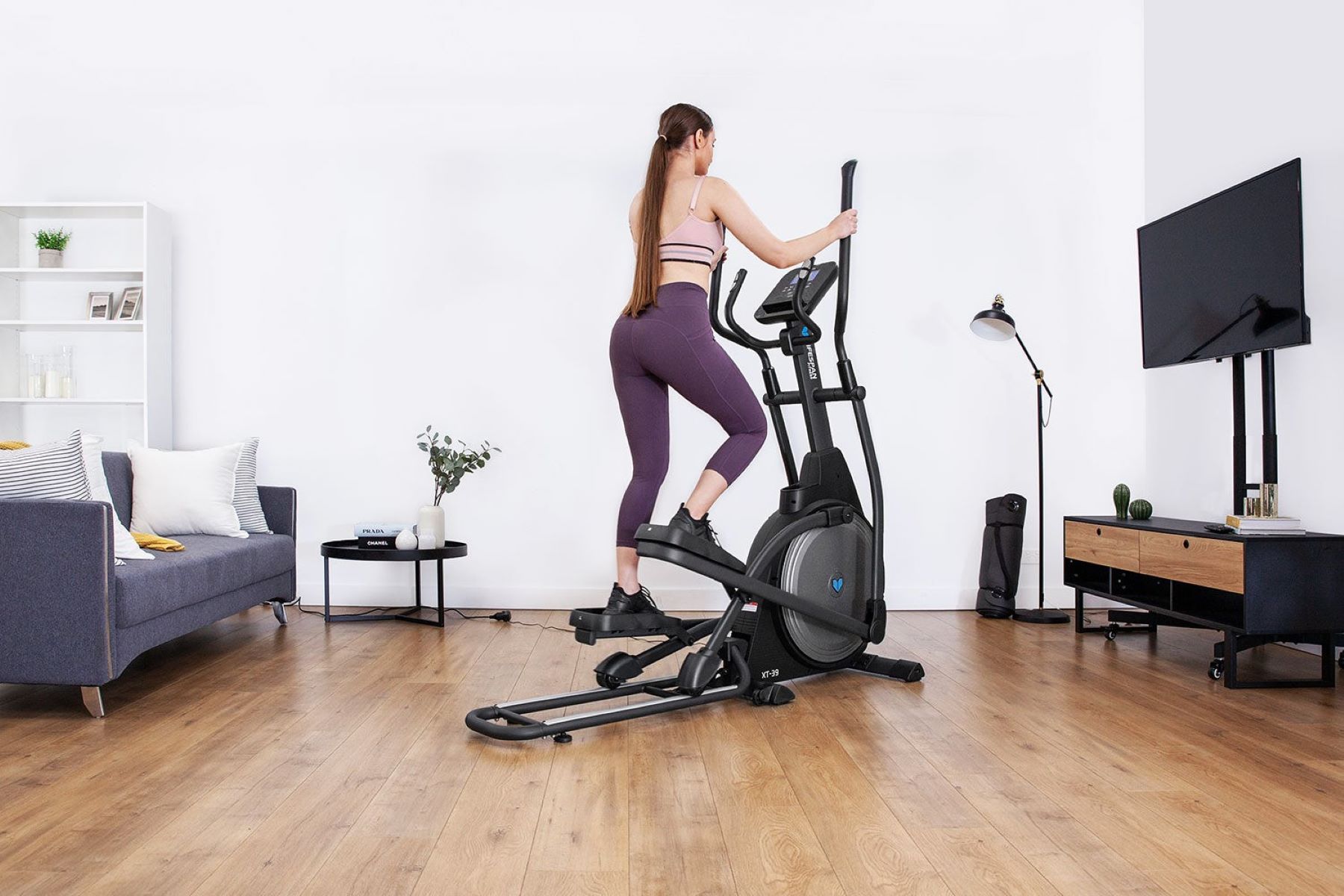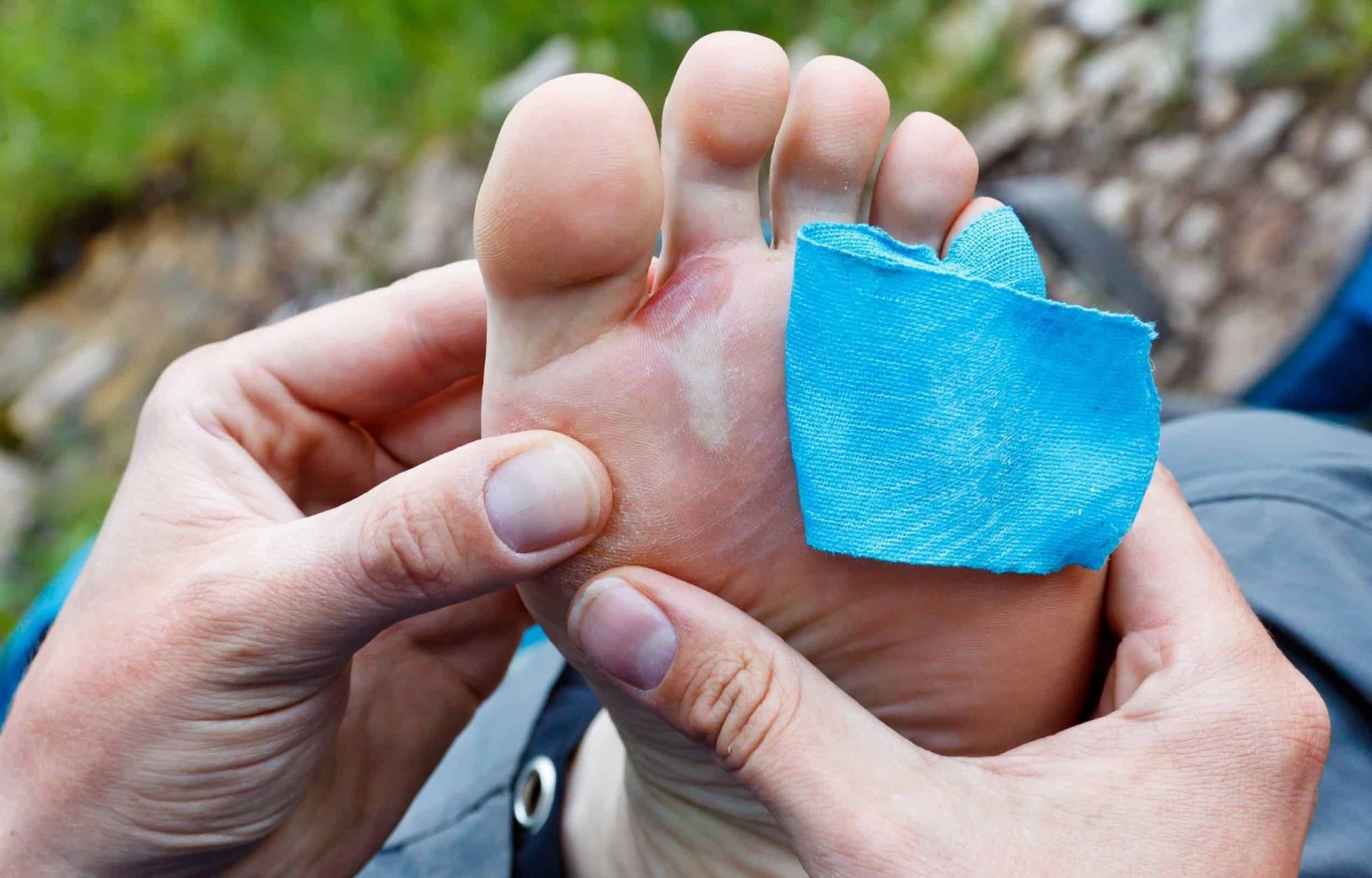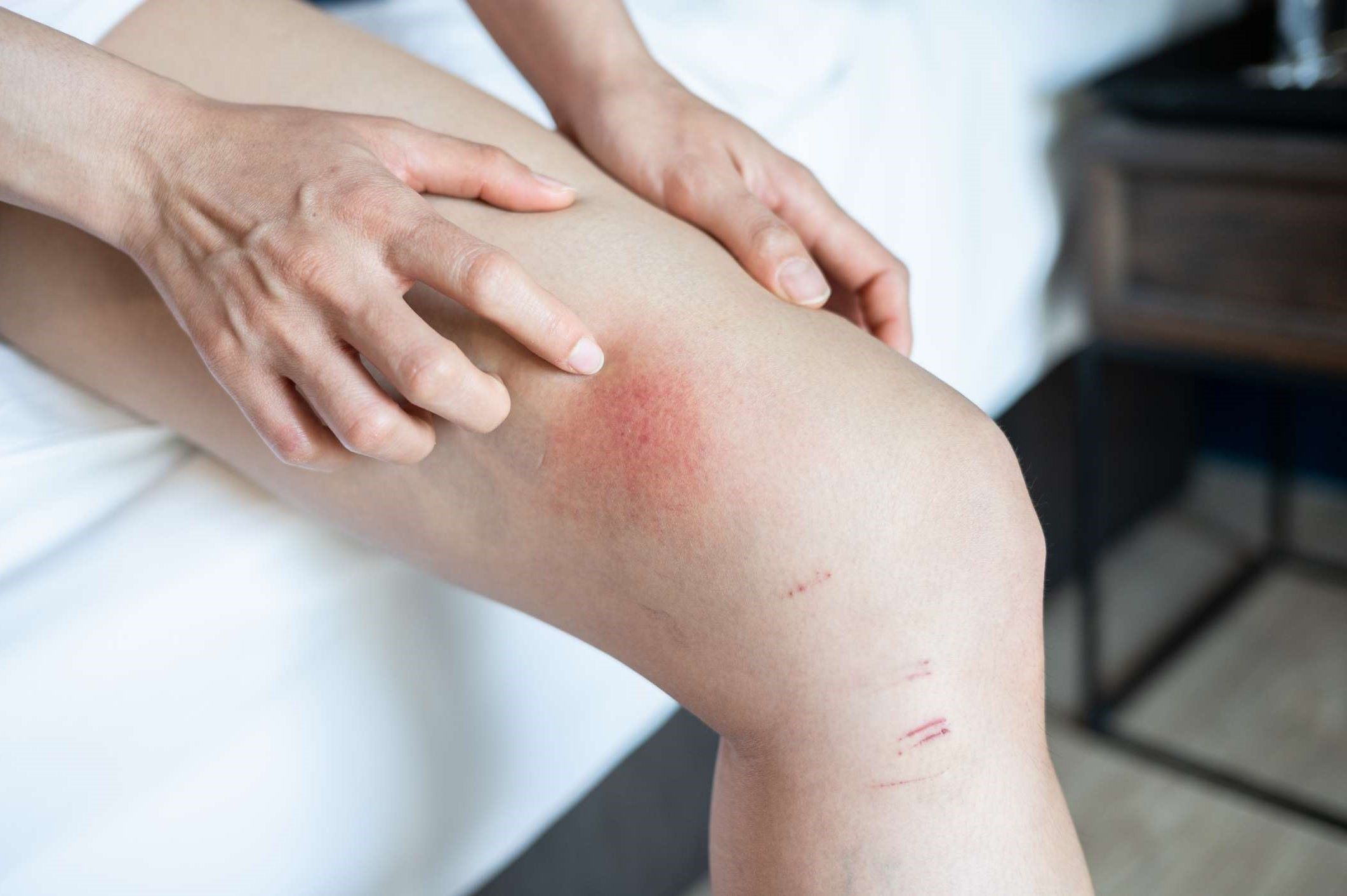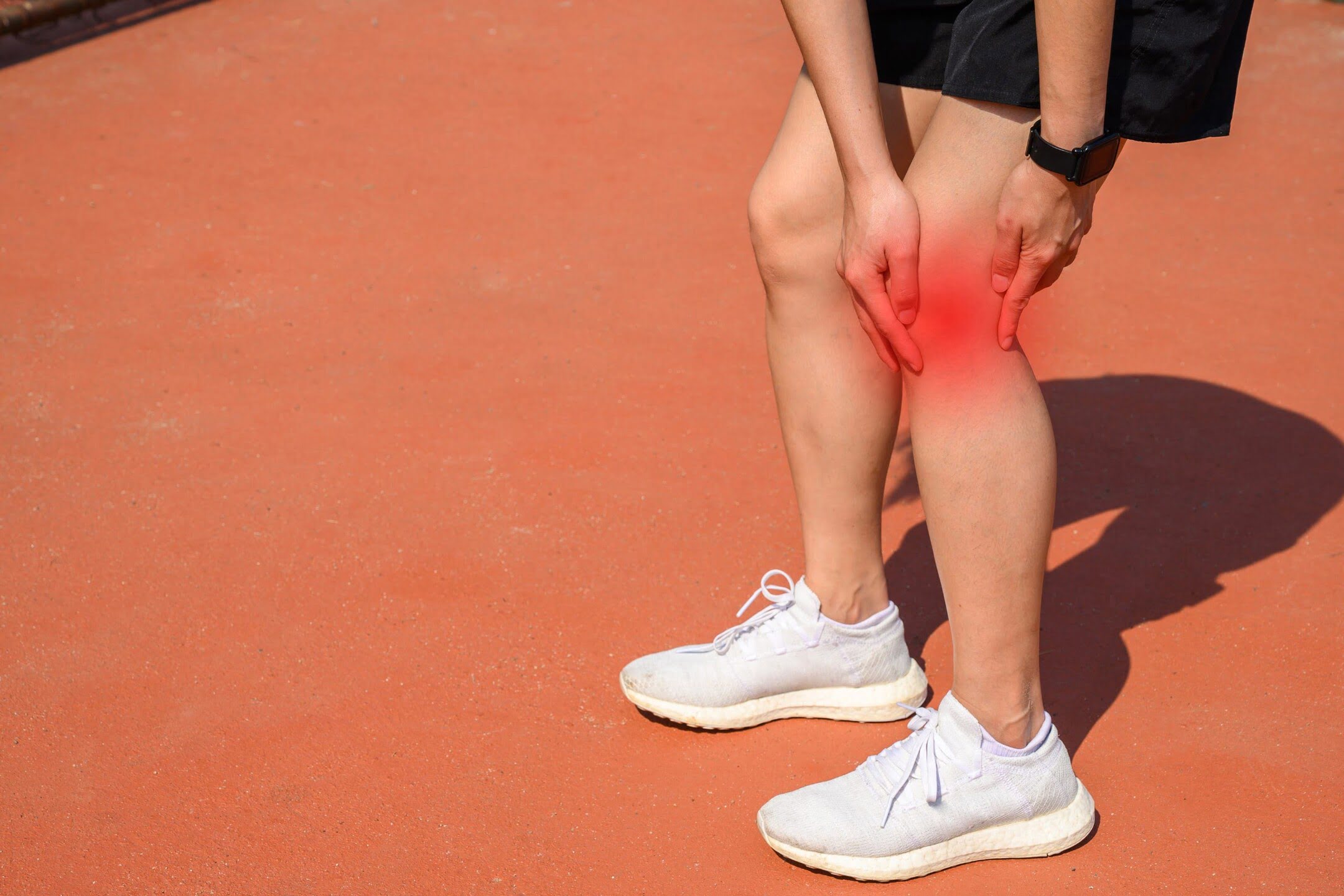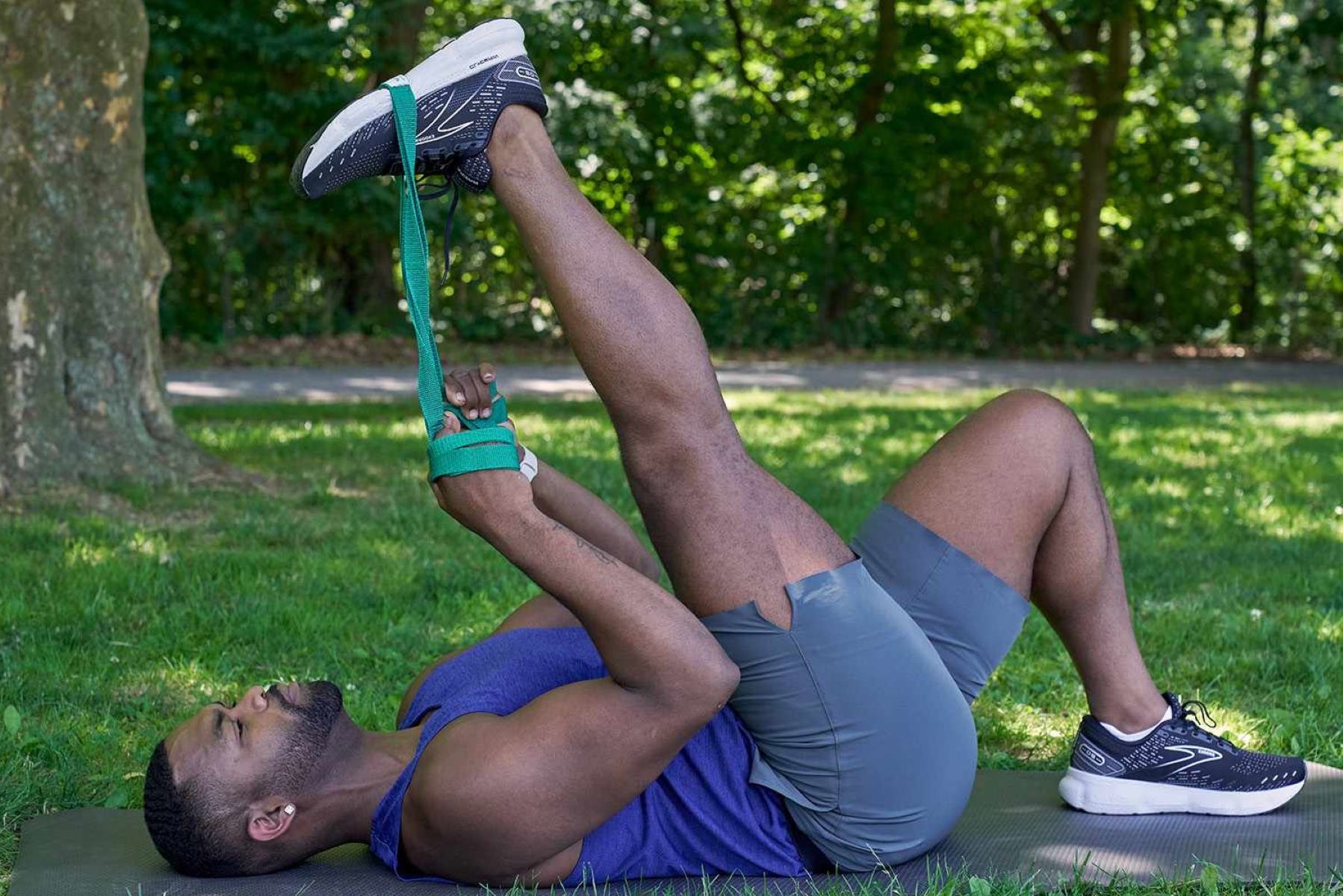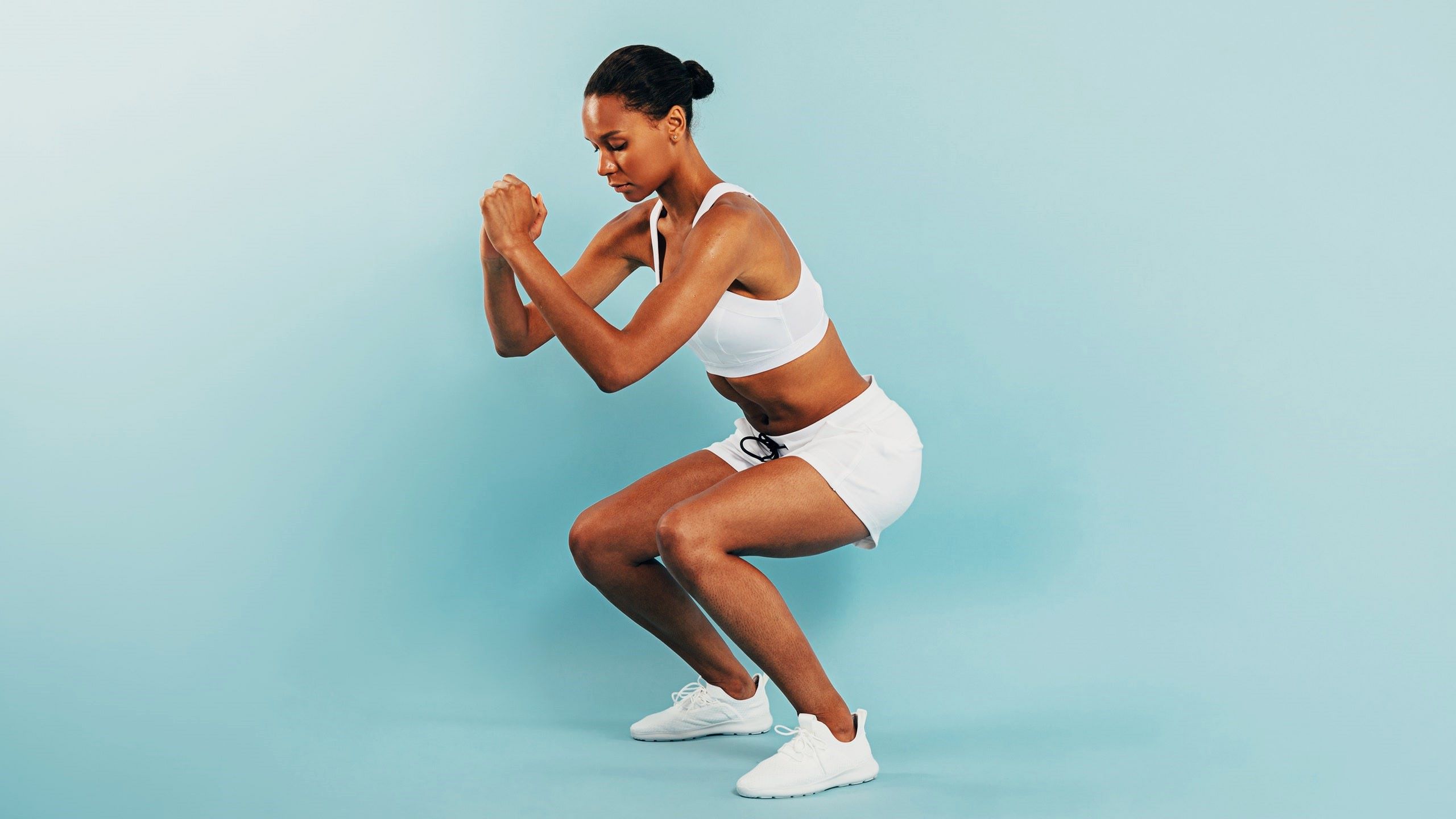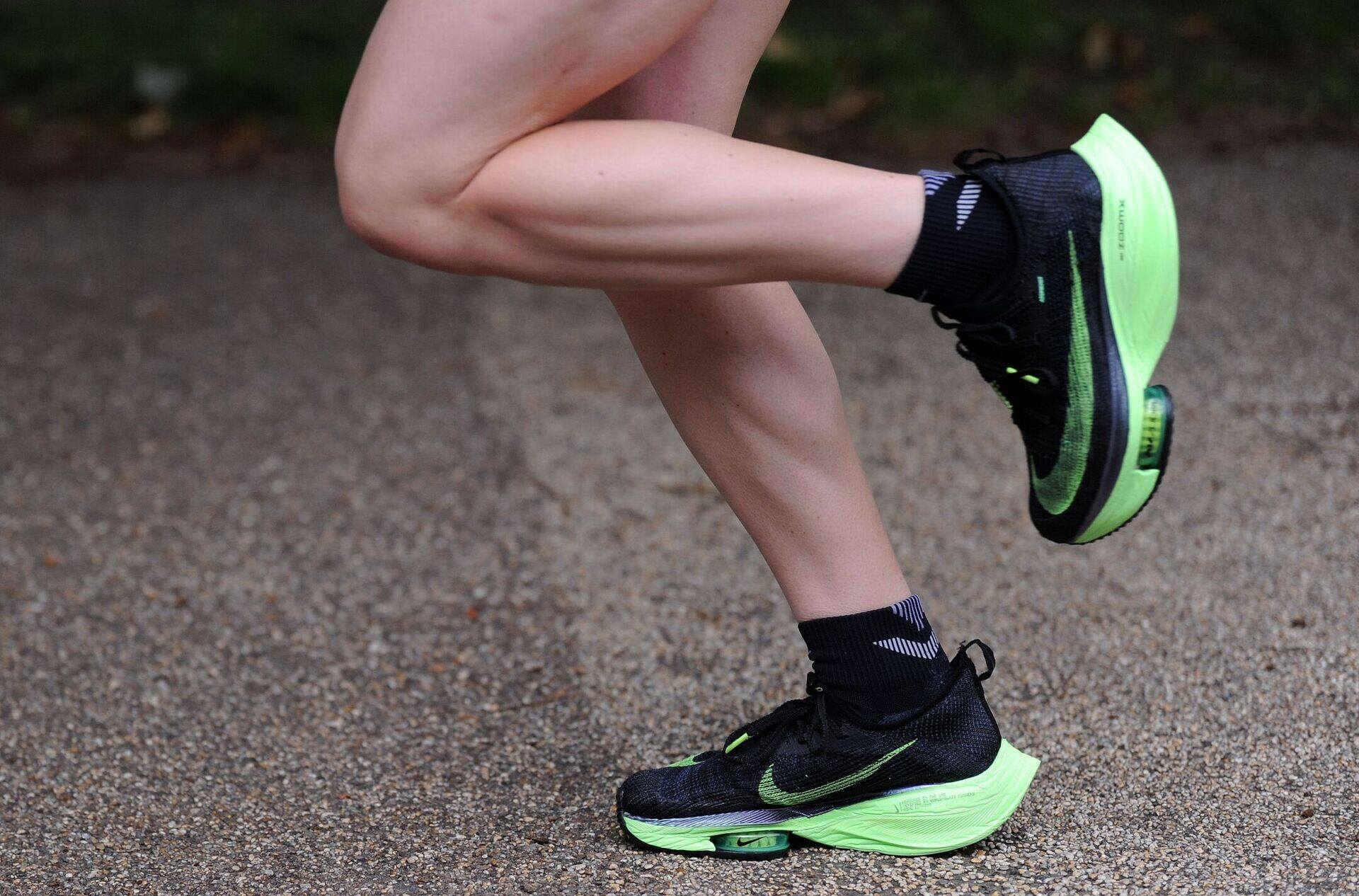Home>Health & Nutrition>Injury Prevention>Preventing Overpronation: Effective Exercises For Runners
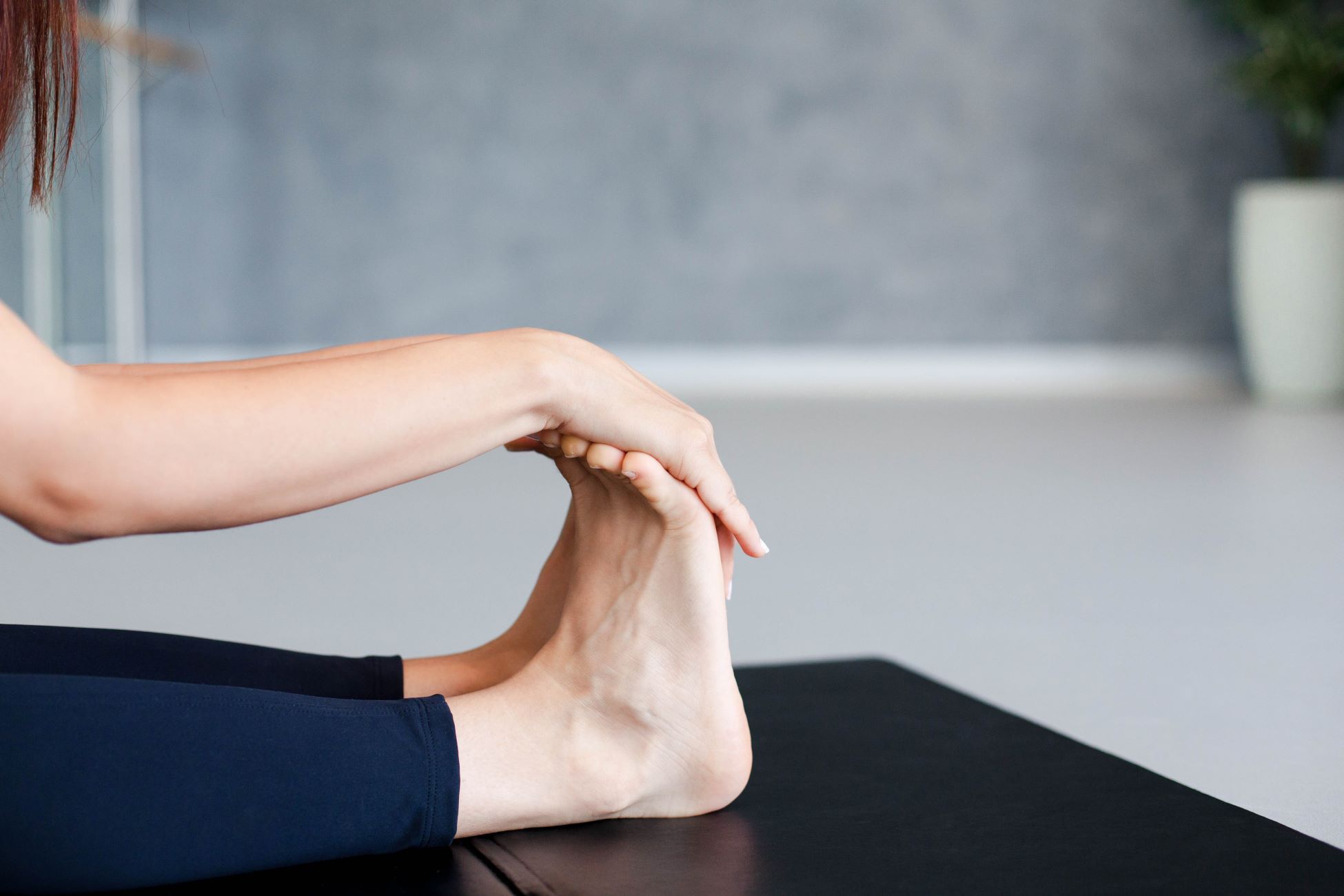

Injury Prevention
Preventing Overpronation: Effective Exercises For Runners
Published: February 22, 2024
Prevent overpronation and avoid injuries with effective exercises for runners. Learn how to improve your running form and reduce the risk of injury.
(Many of the links in this article redirect to a specific reviewed product. Your purchase of these products through affiliate links helps to generate commission for Therunningadvisor.com, at no extra cost. Learn more)
Table of Contents
Understanding Overpronation
Overpronation is a common biomechanical issue that occurs during the gait cycle when the foot rolls inward excessively. This can lead to an imbalanced distribution of weight and pressure on the foot, potentially causing discomfort and increasing the risk of injuries. Understanding the mechanics of overpronation is crucial for individuals, especially runners, as it can significantly impact their performance and overall foot health.
During the gait cycle, the foot undergoes a series of movements to support the body's weight and propel it forward. In a neutral or ideal gait, the foot strikes the ground, rolls slightly inward to absorb shock, and then pushes off evenly from the toes. However, in the case of overpronation, the foot excessively rolls inward, causing the arch to flatten and the ankle to excessively rotate. This misalignment can lead to various issues, including increased stress on the ligaments and tendons, inefficient energy transfer, and instability in the lower extremities.
It's important to note that overpronation is not inherently problematic for everyone. In fact, a certain degree of pronation is a natural and necessary component of the foot's biomechanics. However, when overpronation becomes excessive or uncontrolled, it can contribute to a range of musculoskeletal problems, particularly for individuals engaged in high-impact activities such as running.
Understanding the specific characteristics of overpronation, such as the inward rolling of the foot and the associated strain on the arch and ankle, can empower individuals to take proactive measures to address and mitigate its effects. By recognizing the signs of overpronation, individuals can seek appropriate guidance and implement targeted strategies to improve their foot mechanics and reduce the risk of associated injuries.
In summary, understanding overpronation involves recognizing the abnormal inward rolling of the foot during the gait cycle and its potential impact on foot function and injury risk. This awareness serves as a foundation for individuals to explore preventive measures and interventions, ultimately promoting better foot health and performance, particularly for runners and athletes.
Common Injuries Caused by Overpronation
Overpronation, if left unaddressed, can lead to a variety of injuries and discomfort due to the excessive inward rolling of the foot. These injuries are often associated with the misalignment and overloading of the foot and lower extremities, impacting individuals engaged in physical activities, particularly runners. Understanding the potential injuries caused by overpronation is essential for individuals to recognize the importance of proactive measures and targeted interventions to mitigate these risks.
-
Plantar Fasciitis: Overpronation can contribute to the development of plantar fasciitis, a common condition characterized by inflammation of the plantar fascia, a thick band of tissue that runs across the bottom of the foot. The excessive rolling inward of the foot places increased strain on the plantar fascia, leading to micro-tears and inflammation, resulting in heel pain and discomfort, especially during the initial steps in the morning or after prolonged periods of rest.
-
Achilles Tendonitis: The misalignment associated with overpronation can also impact the Achilles tendon, the large tendon that connects the calf muscles to the heel bone. Overpronation can lead to excessive stretching and strain on the Achilles tendon, increasing the risk of tendonitis. This condition is characterized by pain and stiffness in the back of the heel and lower calf, particularly during physical activities or when pushing off the foot.
-
Shin Splints: Overpronation can contribute to the development of shin splints, a common overuse injury characterized by pain along the inner edge of the shinbone. The excessive rolling inward of the foot can lead to increased stress on the muscles and connective tissues surrounding the shinbone, resulting in inflammation and discomfort during physical activities, particularly running and jumping.
-
Stress Fractures: The imbalanced distribution of weight and pressure on the foot due to overpronation can increase the risk of stress fractures, particularly in the bones of the foot and lower leg. The repetitive impact and strain on the bones, coupled with the misalignment of the foot, can lead to small cracks or fractures, causing localized pain and discomfort during weight-bearing activities.
-
Knee Pain: Overpronation can also contribute to knee pain and discomfort due to the misalignment and increased stress on the knee joint. The inward rolling of the foot can alter the biomechanics of the lower extremities, potentially leading to issues such as patellofemoral pain syndrome and iliotibial band syndrome, impacting the stability and function of the knee during physical activities.
In summary, overpronation can contribute to a range of injuries, including plantar fasciitis, Achilles tendonitis, shin splints, stress fractures, and knee pain, highlighting the importance of addressing and mitigating the effects of overpronation to promote better foot health and reduce the risk of associated injuries, particularly for individuals engaged in high-impact activities such as running.
Importance of Strengthening Exercises for Overpronation
Strengthening exercises play a pivotal role in addressing overpronation and mitigating its potential impact on foot health and overall performance, especially for individuals engaged in physical activities such as running. By targeting specific muscle groups and enhancing the stability and alignment of the foot and lower extremities, these exercises can effectively address the underlying biomechanical issues associated with overpronation, ultimately reducing the risk of injuries and promoting optimal foot function.
One of the key benefits of incorporating strengthening exercises into a comprehensive overpronation prevention strategy is the improvement of muscle strength and endurance. By targeting the intrinsic and extrinsic muscles of the foot, as well as the muscles of the lower leg and ankle, individuals can enhance the overall stability and support provided by these muscle groups during weight-bearing activities. This, in turn, helps to counteract the excessive inward rolling of the foot, promoting a more neutral alignment and reducing the strain on the ligaments and tendons.
Furthermore, strengthening exercises contribute to the development of proprioception and neuromuscular control, essential components for individuals with overpronation. Proprioception refers to the body's ability to sense its position in space and is crucial for maintaining balance and stability during dynamic movements. By engaging in targeted exercises that challenge proprioceptive awareness, individuals can improve their ability to adapt to varying surfaces and movements, reducing the risk of instability and potential injuries associated with overpronation.
In addition to enhancing muscle strength and proprioception, strengthening exercises also play a vital role in promoting proper foot arch support and alignment. By targeting the intrinsic muscles of the foot, individuals can improve the dynamic support provided by the arch, reducing the likelihood of excessive collapse and pronation during weight-bearing activities. This can significantly contribute to the overall stability and efficiency of the foot mechanics, allowing for a more balanced distribution of weight and pressure during each step.
Moreover, strengthening exercises can aid in the prevention of overuse injuries by improving the overall resilience and adaptability of the foot and lower extremities. By gradually increasing the load and intensity of targeted exercises, individuals can enhance the capacity of the muscles and connective tissues to withstand the demands of physical activities, reducing the risk of strain and fatigue associated with overpronation.
In summary, the importance of strengthening exercises for overpronation lies in their ability to improve muscle strength, enhance proprioception, promote proper foot arch support, and prevent overuse injuries. By incorporating targeted strengthening exercises into a comprehensive preventive strategy, individuals can effectively address the biomechanical issues associated with overpronation, ultimately promoting better foot health and reducing the risk of associated injuries, particularly for runners and athletes.
Effective Exercises for Preventing Overpronation
Engaging in specific exercises tailored to address overpronation can significantly contribute to improving foot mechanics and reducing the risk of associated injuries. These exercises target key muscle groups and biomechanical factors, ultimately promoting better foot alignment and stability during weight-bearing activities, particularly for runners and athletes.
1. Calf Raises
Calf raises are an effective exercise for strengthening the calf muscles, which play a crucial role in supporting the arch of the foot and controlling pronation. By performing calf raises on a raised surface, individuals can target both the gastrocnemius and soleus muscles, enhancing their strength and endurance to provide better support for the foot's arch.
2. Toe Spreading and Gripping
This exercise focuses on the intrinsic muscles of the foot, which are essential for maintaining the foot's arch and stability. By alternately spreading and gripping the toes, individuals can activate and strengthen these intrinsic muscles, promoting better arch support and control over pronation.
3. Resistance Band Exercises
Utilizing resistance bands to perform exercises such as ankle eversion and inversion can effectively target the muscles responsible for controlling foot pronation. These exercises help improve the strength and stability of the ankle and lower leg, reducing the excessive inward rolling of the foot during the gait cycle.
4. Single-Leg Balance Exercises
Engaging in single-leg balance exercises challenges proprioception and neuromuscular control, essential components for individuals with overpronation. By standing on one leg and maintaining balance, individuals can enhance their ability to stabilize the foot and lower extremities, reducing the risk of instability and potential injuries associated with overpronation.
5. Arch Strengthening Exercises
Specific exercises, such as towel scrunches and marble pickups, target the muscles that support the foot's arch. By actively engaging these muscles, individuals can improve the dynamic support provided by the arch, reducing the likelihood of excessive collapse and pronation during weight-bearing activities.
6. Ankle Stability Exercises
Incorporating exercises that focus on ankle stability, such as heel walking and toe walking, can enhance the strength and proprioceptive awareness of the ankle joint. These exercises contribute to better control over foot alignment and stability, reducing the impact of overpronation during physical activities.
By incorporating these effective exercises into a regular training routine, individuals can proactively address overpronation and promote better foot mechanics, ultimately reducing the risk of associated injuries. It's important to gradually increase the intensity and frequency of these exercises to allow for the adaptation and strengthening of the relevant muscle groups, contributing to improved foot health and overall performance.
Incorporating Stretching into Your Routine
In addition to strengthening exercises, incorporating stretching into your routine is essential for addressing overpronation and promoting optimal foot health. Stretching exercises play a crucial role in improving flexibility, reducing muscle tightness, and enhancing the overall range of motion in the lower extremities, particularly for individuals with overpronation. By targeting specific muscle groups and connective tissues, stretching can help alleviate the tension and imbalances that contribute to overpronation, ultimately supporting better foot mechanics and reducing the risk of associated injuries.
Calf Stretching
Stretching the calf muscles is particularly beneficial for individuals with overpronation, as tightness in these muscles can exacerbate the inward rolling of the foot. Performing calf stretches, such as the standing calf stretch and the wall calf stretch, can help alleviate tightness in the gastrocnemius and soleus muscles, promoting better ankle flexibility and reducing the strain on the foot's arch during weight-bearing activities.
Plantar Fascia Stretch
The plantar fascia, a band of tissue that runs along the bottom of the foot, can become tight and inflamed in individuals with overpronation, contributing to discomfort and compromised foot function. Incorporating plantar fascia stretches, such as the seated toe stretch and the towel stretch, can help alleviate tension in this area, promoting better foot flexibility and reducing the risk of conditions such as plantar fasciitis.
Achilles Tendon Stretch
Stretching the Achilles tendon and the calf muscles can help improve ankle flexibility and reduce the strain on the lower leg and foot. The downward-facing dog stretch and the standing calf stretch with a towel are effective stretches for targeting the Achilles tendon and the calf muscles, promoting better overall mobility and reducing the impact of overpronation during physical activities.
Toe and Foot Flexibility Exercises
Engaging in exercises that promote toe and foot flexibility, such as toe curls and toe extensions, can help improve the range of motion in the toes and the intrinsic muscles of the foot. These exercises contribute to better control over foot alignment and stability, reducing the impact of overpronation during the gait cycle.
Incorporating these stretching exercises into your regular routine, particularly before and after physical activities, can help alleviate muscle tightness, improve flexibility, and support better foot mechanics. It's important to perform each stretch in a controlled manner, holding the position for 15-30 seconds and repeating the stretch 2-3 times for optimal benefit. By integrating stretching into your preventive strategy for overpronation, you can enhance the overall flexibility and resilience of the lower extremities, ultimately reducing the risk of associated injuries and promoting better foot health.
Tips for Choosing the Right Footwear for Overpronation
Selecting the appropriate footwear is paramount for individuals with overpronation, particularly for runners and athletes, as it can significantly impact foot mechanics and reduce the risk of associated injuries. When choosing footwear to address overpronation, several key considerations can guide individuals in making informed decisions to support optimal foot health and performance.
1. Stability and Support
Look for shoes with adequate stability features, such as firm heel counters and structured arch support. These elements help control the inward rolling motion of the foot, providing essential support to mitigate overpronation during the gait cycle. Additionally, shoes with reinforced midfoot support can contribute to better alignment and reduce excessive pronation.
Read more: Gear Review: Kinomap Trainer
2. Motion Control Features
Footwear designed with motion control features can effectively address overpronation by incorporating technologies that limit excessive inward movement. Look for shoes with dual-density midsoles or medial posts, which are specifically engineered to counteract overpronatory motion and promote a more neutral foot alignment during activities.
3. Cushioning and Shock Absorption
Opt for shoes with ample cushioning and effective shock absorption properties to mitigate the impact of overpronation on the foot and lower extremities. Enhanced cushioning can help attenuate the forces associated with excessive pronation, reducing the strain on the muscles, tendons, and ligaments, ultimately promoting better comfort and protection during physical activities.
4. Proper Fit and Sizing
Ensure that the selected footwear provides a snug and supportive fit, particularly around the midfoot and heel areas. Proper sizing and fit are essential for optimizing the supportive features of the shoes, minimizing excessive movement within the footwear, and promoting better control over foot mechanics. Additionally, consider trying on shoes later in the day when the feet are slightly swollen to ensure an accurate fit.
5. Flexibility and Range of Motion
While stability is crucial, it's also important to select footwear that allows for natural foot movement and flexibility. Look for shoes with adequate forefoot flexibility to accommodate the foot's natural biomechanics while providing the necessary support to address overpronation. A balance between stability and flexibility is key for individuals with overpronation.
6. Professional Fitting and Assessment
Seeking guidance from footwear professionals, such as podiatrists or specialized shoe store staff, can provide valuable insights into selecting the most suitable footwear for overpronation. Professional assessments can help identify individual foot characteristics and gait patterns, leading to personalized recommendations for footwear that effectively addresses overpronation.
By considering these essential tips when choosing footwear for overpronation, individuals can make informed decisions to support better foot mechanics, reduce the risk of associated injuries, and enhance overall comfort and performance during physical activities. Selecting the right footwear tailored to address overpronation can significantly contribute to promoting optimal foot health and supporting individuals in their active pursuits.

